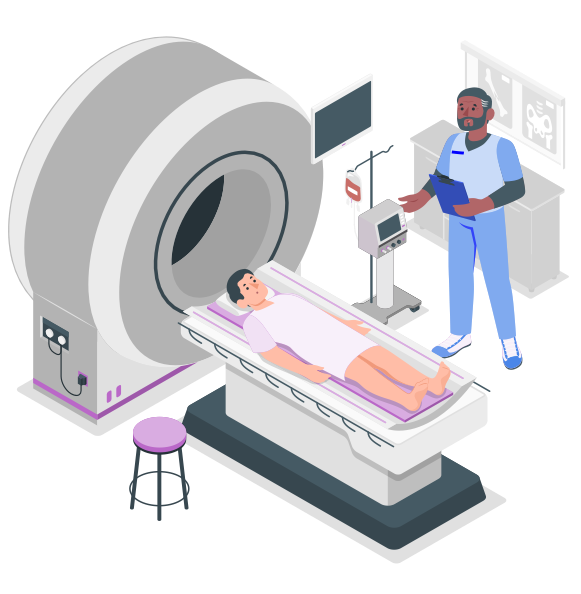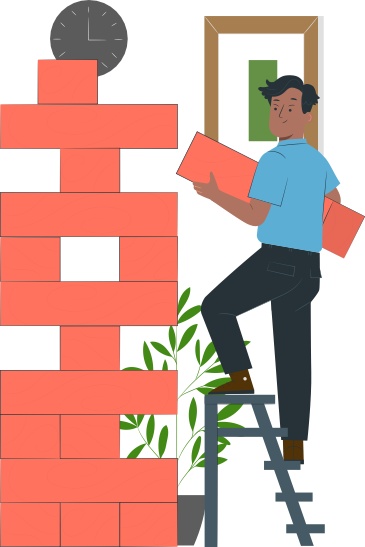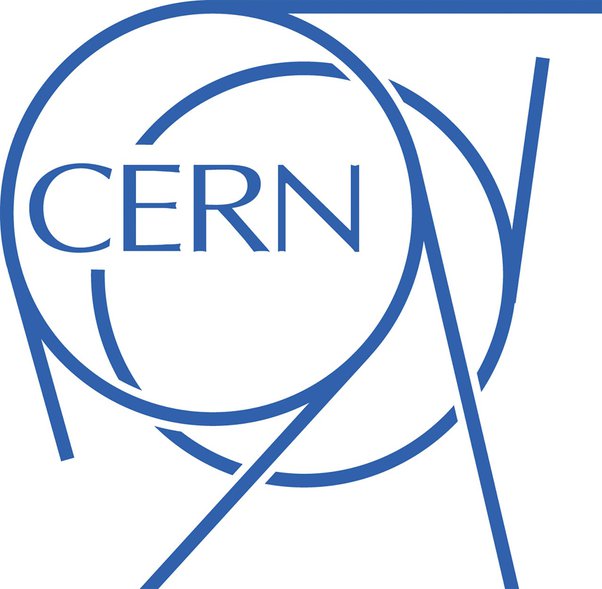Workshop
26 students · 12+ years · 90 min • EN/FR
TEACHING QUANTUM WITH GAMES?
For many students, quantum concepts can feel strange and intimidating. What better way to break down these barriers than through a game? |Hop> lets students explore quantum
mechanics effortlessly through play, sparking their curiosity and offering teachers the perfect gateway to deeper learning.
But bringing a new game to students can be challenging, that’s why we crafted the guide below with all the necessary resources (explanations, materials, links, tips, quizzes…) to host a workshop on quantum physics based with the help of |Hop>.

OUR MOTIVATION
WHAT EVEN IS QUANTUM?
For many, the term quantum evokes a mysterious, almost magical notion. It’s frequently used to bolster an argument or to sound more serious and intelligent. But what does the word quantum really mean?
It refers to the idea that all physical quantities are not continuous, but rather take discrete values called quanta. It’s a revolution in the way particles behave. Before quantum physics, we imagined that particles behaved like everyday objects. For example, if you call a cat, it can come to you from any distance: a meter, a millimeter or anything in between (although, let’s be honest, the cat will probably ignore you, as cats often do).
Electrons, on the other hand, can’t be at any distance from an atomic nucleus. They are confined to specific orbitals and corresponding energy levels which are quantized. It’s as if the cat could only get close to you by walking down a staircase, stopping on one step or another, never in between.


WHAT DOES IT CHANGE?
In our daily lives, not much. Let’s face it, the idea of a quantum subatomic world with cities and people only exists on the movie “Ant-Man and the Wasp: Quantumania”.
But that doesn’t mean that the microscopic scale of atoms is anything but exciting. There, we can find completely new concepts and properties like spin, quantum entanglement, wave-particle duality, the tunnel effect or superconductivity. These principles underpin innovations such as transistors, lasers and MRI scan, and pave the way for advances in fields such as quantum computing and quantum cryptography.
That said, while quantum physics offers incredible potential, it can be difficult to grasp due to its abstract nature and complex math. Classical analogies like Schrödinger’s cat can be useful, but often result in paradoxes that leave people more perplexed than anything else. These are thought experiments that don’t apply to the macroscopic world after all.
Our aim is to create an experiment that combines easy understanding with scientific rigor, while being engaging… And above all, fun!

USING A GAME, REALLY?
In recent years, we’ve heard a lot about learning through games. Historically, games were generally not considered legitimate educational tools. For many (and this is still sometimes the case), learning was synonymous with suffering. Fun and learning didn’t mix.
However, thanks to the work of researchers such as Homo Ludens [1] and Des hommes et des jeux [2], and many others since the 2000s [3,4,5], it is now established that games can be powerful learning tools. Playing requires commitment, and this personal involvement is essential for effective learning. Whether through the theories of Montessori or other educational approaches, the idea of learning through play has finally acquired its letters of nobility.
With the rise in popularity of board games in recent years, the creation of so-called educational games has accelerated. But not all serious games meet even the academic definition of a game: often, they’re more like thinly disguised quizzes. This explains their short lifespan and limited success.


WHY USE |HOP>?
We designed |HOP> with the following moto in mind:
Discover quantum, no prior knowledge of physics or math required!
The game offers three levels that allow you to assimilate the physics without even realizing it. Each level is based on the same basic mechanics, allowing students to progress naturally over the course of a 90-minute session. At the end, it’s up to you to dive deeper into the physics according to your objectives. After all, every element in |Hop> is based on a real quantum principle so there is plenty of material to explore!
We chose to create a physical board game rather than a video game because it allows students to interact tangibly with otherwise abstract concepts, promoting better assimilation of information [6,7]. However, board games have inherent limitations when addressing quantum concepts. Rather than concealing these limitations, we believe in highlighting them to create opportunities for constructive discussions with students, illustrating how classical representations of quantum phenomena can break down.

HOW TO ORGANIZE THE WORKSHOP
Below, we provide a complete step-by-step guide on how-to organize a 90min workshop centered around |Hop>. The target audience are students aged 12 and above but even university professors will enjoy it. All the necessary documents to host the workshop are available for free. However, if you wish to acquire 12 games for a cheaper price we created the Educational Kit that also includes a Powerpoint version of the quiz and 1h30 personalized support with the creators so you don’t have read this guide at all!
When introducing your students to |Hop>, bear in mind that not everyone will be immediately enthusiastic. It’s up to you choose the best strategy to engage uninterested students: inaction, competition, etc. Once they’re playing, they’ll quickly realize how much fun it is to learn the basic concepts of quantum physics.
Throughout the guide you will see highlighted texts
like this one
summarizing our personal experience hosting this workshop, so pay extra attention!
MATERIAL
Here is what you will need:
- A game of |Hop> for every two students (three if the number of students is odd).
|Hop> can be played with three or four people (teams of two), but the pace is slower, less accessible and not suitable for the workshop.
- Four-colored cards with the letters A, B, C and D on each side.
- The entry and exit quizzes.
- One teacher for every 20 students.
- A drawing board.
The material to download can be found here.
PREPARATION
Before the workshop, take the time to play all levels of |Hop>. You’ll find a detailed video explanation of the rules in the Rules section. We also suggest you consult our Infobook for some ideas on how to communicate physics concepts to a young audience. If you have any questions, please don’t hesitate to contact us.
If you’ve purchased the Educational Kit, don’t forget to schedule a meeting with us and we will answer any questions you may have and even play one or more games with you!
Make sure you have printed/downloaded the necessary material. Students should be seated in groups of two (maximum three) with a game of |Hop> each.
It’s best if students don’t receive the game until after the quiz to avoid distractions.
READY… SET… GO…
The workshop is organized as follows:
[5 min] INTRODUCTION
The purpose of this moment is to break the ice, to make it clear to the students that they’re going to be actively participating and not just listening to a lecture. So the first question is to ask them what they know about quantum physics. They’ll probably come up with the standard Hollywood nonsense. That’s fine, it’s a basis for discussion! Don’t give them any answers, make them talk as much as possible.
When they run out of ideas, it’s time to talk about the quiz!
[10 min] Entry Quiz
The goal of the quiz is to evaluate students’ knowledge while also provide you with entry points to explain certain physics concepts later on. The quiz is available for download here, along with voting cards to cut out.
With the voting cards, students answer more quickly and feel more engaged.
The quiz consists of 15 multiple-choice questions, with a mix of assessment questions, questions to prompt discussions, and questions intended to make the students smile. It’s important to follow the proposed order of the questions, which has been designed to reflect the progression of knowledge during the workshop.
We recommend giving students 6 seconds to answer each question to avoid getting distracted. The time saved will used for playing the game and discussing the physics.
Do not give the answers to the questions at this point! When you reach the end of the workshop and they want the answers, that’s the moment to say: “The best way to find out is to play!” and launch the next activity.
You should collect the answers to the quiz using the provided answer sheet (only keep the aggregated class totals) to assess the learning progression during the workshop. These answers can later be submitted to us here.
[5 min] Introduction to the game
Setup Instructions:
- Prepare the board in advance by drawing a diagram on the board representing 25 cards laid out in a 5×5 square (see Rules)
- Instruct the students to create the same 5×5 square using only the “site” cards, without touching the rest of the materials.
- Let them select the electrode of their preferred color and gather the 7 corresponding cubes and meeple.
If anyone chooses yellow, remind them that the lightning bolts will be used only later.
- They should pick two opposite corners of the square and place their electrodes there, replacing the corner cards.
- Tell them to place the corresponding cubes onto the electrodes and mention that the cubes represent electrons.
- They can now assemble the Movement board and place it accessible to both players with the two colored meeples next to it.
If a board piece doesn’t fit properly, it’s likely on the wrong side.
Explain the context
|Hop> is a board game inspired by quantum physics, where each player takes on the role of a university physicist. After an accident involving a cutting-edge experimental machine that short-circuited, everyone is trying to prove the error was someone else’s fault. Tell them that if they don’t want to fail your class, it’s time to put the electrodes to work!
You can point to the cards when mentioning the machine to establish a link between the game and terms like electrodes and electrons.
Explain the board mechanism
Tell them that the goal is to reach the opponent’s electrode by moving their electrons (cubes) across the board. |Hop> can be compared to a simplified version of chess with less movements but played on two overlapping boards:
- The top board corresponds to the orange zones on the cards, representing the “spin up”.
- The bottom board corresponds to the turquoise zones, representing the “spin down”.
The only way to move between the two boards is within the same card, the orange and turquoise zones in different cards are not connected!
A possible analogy is a grid of houses with a first floor and connected bunkers (or basements if you are not in Switzerland). To go to any basement, you need first to enter one house, take the stairs to the bunker and move underground to the destination. You cannot jump from the first floor to an adjacent bunker, the floor is on the way!
[8 min] Introduction to Bachelor Level
At the Bachelor’s level, a single board is used: the movement board, in green, which illustrates the five possible moves.
Ensure that students correctly assemble the movement board on the “Bachelor’s/Master” side.
Explain the movements
Explain the five possible movements one by one, using the explanations available here. At the end, highlight the following common errors:
- The quantum tunnel effect and Newton’s pendulum cannot create angles or change spins.
- The doublon effect cannot move particles across separate boards.
- All movements can be used to enter or exit an electrode.
- Your movements can affect and therefore move other players’ electrons.
- Two electrons can never share the same spin
Although not an error, players often forget that they can and should play 2 movemetns per turn for the game to work properly
Explain the objective (again)
Whenever possible, explain that game’s goal and emphasize that it suffices a single electron to enter an electrode for the game to finish. Since there is no perfect defense, adopting an offensive strategy is crucial. The game is designed to be quick so ask them to: play, try, lose, and win! It’s more fun than overthinking every move!
What is the physical error at this level?
Electrons are represented by colors and are therefore distinguishable. In reality, electrons are indistinguishable from one another. However, it’s easier to play a game where you can recognize your pieces! The fact that your movements can impact others’ pieces aims to minimize this divergence.
[10 min] Game play - Bachelor Level
In 10 minutes, most students should complete at least one full game, and faster players may even finish a second round.
[2 min] feedback - bachelor level
This is the moment of truth! Ask the participants, “Did you learn anything?” Nine out of ten will likely say no—they didn’t learn anything. That’s your confirmation that the activity was successful! Why? Because they have learned—at least the answers to four key questions posed in the entry quiz—without realizing it.
The key here is not to delve into detailed physics discussions at this stage (those can come later), but rather to focus on how the answers were subtly embedded within the gameplay. Highlight how the game’s mechanics revealed the concepts naturally.
Are All Electrons Identical?
Yes! In quantum mechanics, electrons are considered indistinguishable elementary particles. This means that while they can occupy different states, it is fundamentally impossible to distinguish one electron from another. This property has profound implications, especially in how chemical bonds form and materials behave.
This concept is introduced during the rules explanation, highlighting the physical inaccuracy in Bachelor’s level: game tokens representing electrons have colors, but electrons do not.
Can Electrons Pass Through Walls?
At the quantum scale, particles like electrons exhibit surprising behaviors. One such phenomenon is quantum tunneling, where a particle has a non-zero probability of crossing an energy barrier—even if classical physics would deem it impossible. While electrons don’t literally pass through macroscopic walls, they can traverse atomic-scale barriers, a concept vital in technologies like transistors.
This is covered while explaining the concept of tunneling.
How Many Spin Values Can an Electron Have?
Spin is an intrinsic property of particles, akin to charge or mass. Electrons can have one of two spin states, commonly referred to as “spin up” (↑) and “spin down” (↓). This property is fundamental to the arrangement of electronic structures in atoms and underpins phenomena like magnetism.
This concept is introduced when explaining the gameboard, particularly the two “checkerboards” or sets of differently colored spaces.
Do Electrons Attract Each Other?
Electrons all carry a negative electric charge, which causes them to repel each other due to electrostatic forces. However, in certain materials, complex interactions can lead to situations where electrons pair up attractively. For instance, in superconductors, electrons form Cooper pairs, allowing electric current to flow without resistance.
This is partially addressed with the notion of “Doublon Hop”. It is revisited in the Master level with the introduction of the Hamiltonian card, which defines interactions.
Transition
Now that participants have realized they’ve learned something, offer them a choice: take a break or move straight into the next level. In our experience, participants almost always choose to keep playing!
[5 min] Introduction to Master Level
In this level, a new dimension is added to the gameplay: the energy (Hamiltonian) board. So far, the position of electrons on the board didn’t impact the game mechanics—but now it does.
Explaining energy conservation
The rules of energy conservation can be found here. Essentially, moving electrons to higher-energy configuration costs energy, while moving a lower-energy configuration releases energy. Players must carefully plan their moves, considering the energy available, to avoid getting stuck—or trapping their opponent.
Start the explanation with the magnetic field card and for that we often return to the house analogy:
“Moving from the street to the first floor requires adding energy (potential energy), just like taking an elevator. On the other hand, moving down relies on gravity. That’s why if you push someone down the stairs (please don’t!), they lose potential energy as they fall. That energy transforms… usually into pain and bruises upon impact. So, don’t do it! “
Which is followed by showcasing key movements with a single electron:
- Moving an electron from an electrode to a spin up (player loses 1 energy)
- Moving an electron from a spin up to an adjacent spin up (player doesn’t lose anything)
- Moving an electron from a spin up to a spin down (player gains 2 energies)
The interaction part is simpler because you only have to state that they get 1 energy for every doublon (pair of electron on the same site) created and lose 1 energy if they break the pair.
It is important to show case one example where both the Hamiltonian and Interactions contribute to the energy conservation! You can pick the one is the video explanations.
It’s essential that participants understand that the energy is a finite resource and that if they can’t “pay” the energy cost or “gain” the necessary energy from a move, the action becomes impossible.
What is the physic’s error at this point?
In reality, the Hamiltonian we introduce at this level, combined with kinetic energy (represented by the moves), would cause quantum entanglement. This means the electrons won’t remain in a well-defined spin state.
To simplify the gameplay, we assume the system is under continuous observation, which collapses the spin state into the desired configuration. Convenient, isn’t it?
[15 min] Game Play - Master Level
You know the drill by now…
[15 min] FEEDBACK - Master level
By this stage, students are beginning to suspect they’ve learned something. It’s time to help them realize the answers to three key questions from the entry quiz:
Does the Energy of an Electron Orbiting a Nucleus Change with a Magnetic Field?
Yes! The energy of an electron orbiting an atom changes in the presence of a magnetic field. This phenomenon, known as the Zeeman effect, arises from the interaction between the electron’s spin and the magnetic field. This principle is utilized in technologies like Magnetic Resonance Imaging (MRI).
This concept is embedded in the game through the Magnetic Field card that attributes different energies to different spins.
Is Energy Conserved When Electrons Move?
Yes, the principle of energy conservation states that the total energy of an isolated system remains constant. When electrons move in a straight line within a system without external interactions, the total energy is conserved, though it can shift between different forms—such as kinetic and potential energy.
This idea is explained during the introduction of the Hamiltonian board and energy mechanics.
Which Fields Are Entirely Governed by Quantum Physics?
Quantum physics primarily governs phenomena at the atomic and subatomic scales. However, it also has significant implications for various fields, including chemistry, materials science, electronics, and even some areas of biology—such as explaining photosynthesis at its most fundamental level.
This is introduced when discussing energy levels and the fact that electrons cannot occupy all energy states—unlike, say, a cat.
But What About the Other Questions?
Here’s the moment to foster critical thinking. As fascinating as it is, quantum effects aren’t magical and typically don’t apply at the macroscopic scale. This means claims like quantum beauty products, quantum cloning (or teleportation), or quantum psychological therapies are likely just marketing gimmicks.
If you are interesting in debunking quantum nonsense, we reccomend G. Milgram’s video on quantum medbeds.
Doctorate level (optional)
Even if participants don’t have time to play the Doctorate level during the workshop, you can mention that the Doctorate version adds fun effects that allow them to destroy an opponent’s electron or make electrons go in circles. We recommend showcasing the Superposition card as such an example.
This not only leaves them eager to explore the game further but also gives you the perfect excuse to discuss the most important concept in quantum mechanics whilst answering the last question:
What is Superposition?
Superposition is a fundamental principle of quantum mechanics, where a quantum system can exist in multiple possible states simultaneously until it is measured. An everyday classical analogy is a spinning coing captured mid-air, it’s neither definitively heads nor tails—it exists in a state of uncertainty until we observe it. This concept is at the heart of groundbreaking technologies like quantum computing, where superposition enables quantum bits (qubits) to represent multiple values simultaneously, vastly increasing computational potential.
In the game, this principle is illustrated by the superposition effect card.
[5 min] Exit Quiz
The exit quiz is similar to the entry quiz but in a different order. This approach allows you to track changes in the participants’ answers and gauge their understanding. Use this moment to confirm the correct answers, as all the explanations were provided throughout the workshop.
Againg, you should collect the answers to the quiz using the provided answer sheet (only keep the aggregated class totals) which can be submited to us here.
[5 min] Recap
At the end of the workshop, you should recap and recontextualize all the information covered here. The level of detail should depend on the participants’ age and prior knowledge, but it’s essential that they walk away with a clear understanding of these fundamental points:
- Quantum mechanics is not magic and does not enable fantastical feats. Most of the popular ideas are thought experiments (e.g., Schrödinger’s cat) that don’t apply at the macroscopic scale.
- Quantum mechanics governs the time evolution of particles at the atomic and subatomic levels.
- Solids are generally made up of atoms arranged in grid-like structures.
- Atoms consist of a nucleus surrounded by electrons, which are responsible for conducting electricity in materials.
- Particles like electrons have properties that are quite different from ours. For example, spin is a unique and intrinsic property of quantum particles.
As an extra motivation for the students, we sometimes offer a challenge where they can win a copy of |Hop> if they manager to beat the host. The student who manages to achieve this victory often invests more time replaying the game, leading to a better grasp of the concepts covered.
Don’t hesitate to send us your feedback and experience regarding this workshop, we will be thrilled to know what you think of it.
EDUCATIONAL KIT
While the workshop can be conducted independently, the Educational Kit provides a practical and comprehensive solution to maximize the educational impact.
CONTENTS
- |HOP> games
- 12 sets included (available in French or English).
- Interactive support session
- A 90-minute online session with our team to guide you through running the workshop effectively.
- PowerPoint quiz
- An interactive version of the quiz for seamless integration into your sessions.
PRICING AND ORDERS
The complete kit is priced at 240€/230Fr. (shipping fees not included; for deliveries within mainland France or Switzerland, estimate approximately 20€/17Fr.). Discounts may be available for bulk orders.
For smaller quantities, individual games can be purchased through the following retailers:
- UNIGE Boutique (FR) or UNIGE Shop (EN) for Switzerland.
- QURECA Online Store for Europe and the rest of the world.
To order the full kit or inquire about discounts for larger orders, contact us at orders@larosedesjeux.com using an official email address from your educational institution.

SUPPORT
Do you want to learn more about quantum physics, the mechanics of the game, or how to use it in your classroom? No problem! Feel free to contact us at contact@hopquantumgame.com, and we’ll be happy to assist you as quickly as possible.
This tool would not be possible without the support of everyone who contributed to the design of this educational tool, a heartfelt thank you to all! We also want to thank YOU! Your feedback and enthusiasm inspire us to keep pushing forward on this exciting journey.
BIBLIOGRAPHY
[1] Huizinga, Johan. “Homo luden: A Study of the Play-Element in Culture”. Routledge (2014).
[2] Caillois, Roger. “Les jeux et les hommes” Gallimard (1958).
[3] Fonseca, Ingrid, et al. “Gamification and Game-based Learning as Cooperative Learning tools: A systematic review.” International Journal of Emerging Technologies in Learning (iJET) 18.21 (2023): 4-23.
[4] Delory-Momberger, Christine. “G. Brougère. Jouer/Apprendre. Paris: Anthropos.” L’orientation scolaire et professionnelle 35/3 (2006): 479-481.
[5] De Freitas, Sara. “Are games effective learning tools? A review of educational games.” Journal of Educational Technology & Society 21.2 (2018): 74-84.
[6] Vlachopoulos, Dimitrios, and Agoritsa Makri. “The effect of games and simulations on higher education: a systematic literature review.” International Journal of Educational Technology in Higher Education 14 (2017): 1-33.
[7] Connolly, Thomas M., et al. “A systematic literature review of empirical evidence on computer games and serious games.” Computers & education 59.2 (2012): 661-686.
MATERIAL
In this section you can find the necessary material (except the games) to host the workshop. If you bought the Educational Kit, use your password found in your kit to unzip the files.
We are conducting academic research on the effectiveness of |Hop> in sparking interest in quantum mechanics. If you’re willing to share the results of your quizzes with us, you can do so using the form below.
Rest assured, the data will be completely anonymized, as we are only requesting the aggregated totals and not any individual details.
Thank you for helping us advance our understanding of educational methods and their impact!





